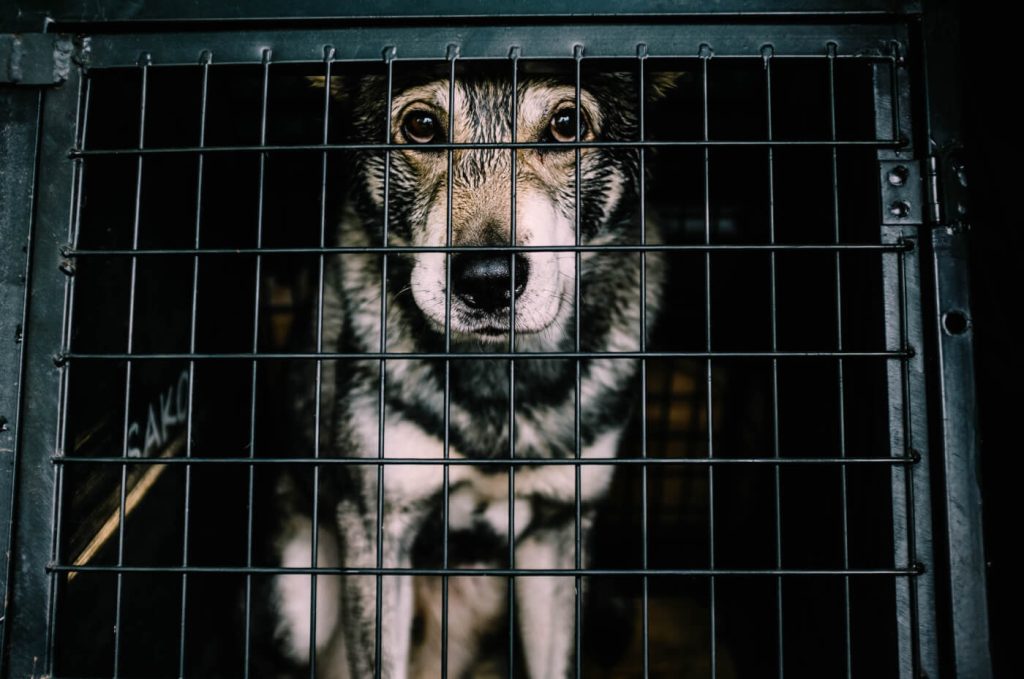Effective Techniques for Crate Training Your Dog

Understanding the Importance of Crate Training
Crate training is a crucial component of responsible dog ownership, intertwining the well-being of your pet with practical solutions for everyday challenges. Utilizing a crate, often referred to as a dog’s den, provides a safe environment where dogs can feel secure and at ease. This not only reassures pets but also assists owners in managing their dog’s behavior effectively.
The Right Duration for Crate Time
A common question among dog owners is, how long should my dog stay in the crate? It’s essential to understand that the amount of time a dog can spend in a crate varies by age and temperament, but generally, puppies can hold their bladders for about one hour for every month of age. Thus, a three-month-old puppy could manage for around three hours. Adult dogs, on the other hand, should ideally not be crated for more than six to eight hours at a time.
Longer durations can lead to anxiety and unintended behavior issues, which ultimately defeat the purpose of crate training. Ensuring your pet has ample opportunity for exercise, bathroom breaks, and companionship is key to a healthy crate experience.
Choosing the Right Crate
When it comes to selecting a crate, the question of what type of crate is best for my dog? is paramount. There are several options available, including wire, plastic, and soft-sided crates. Wire crates are versatile and allow for ventilation, making them a popular choice among dog owners. Plastic crates offer a more enclosed environment, ideal for travel since they’re typically airline-approved. Soft-sided crates, while lightweight and easily portable, are better suited for calm and well-behaved dogs.
Consider your dog’s size, temperament, and specific needs while choosing the crate. For instance, a high-energy dog may benefit from a sturdier wire crate that prevents escape, while a puppy might find solace in a cozy plastic crate lined with soft blankets.

Creating a Positive Space
One of the most effective ways to ensure a successful crate training experience is learning how to make the crate a positive space. Start by introducing the crate gradually, allowing your dog to explore it freely without pressure. Using treats and favorite toys can encourage positive associations. Leaving the doors open at first can help your dog feel relaxed, letting them come and go as they please.
Additionally, consider taking steps to enhance their crate’s comfort—use soft bedding, and avoid placing the crate in isolated areas. Instead, position it in a common area of your home. This way, your dog can feel included in family activities, further reinforcing the notion that their crate is a safe oasis rather than a punishment.
The Benefits of Positive Reinforcement
Implementing positive reinforcement is another vital strategy that strengthens the bond between you and your dog. Instead of using negative corrections, reward your dog for entering the crate willingly and for remaining calm inside. This not only builds trust but also helps your dog develop confidence over time. For example, offering a small treat or verbal praise every time your dog goes into the crate unprompted can encourage them to see it as a place of positivity.
Conclusion
In summary, crate training can significantly enhance the life of both dog and owner when approached with care and understanding. By addressing common concerns, selecting the appropriate crate, and promoting a positive environment through reinforcement, you can transform your dog’s crate into a true sanctuary. As you explore various techniques, always keep in mind that each dog is unique, and adaptability in training methods is key to achieving success. Your diligent efforts will not only lead to a well-behaved canine companion but also foster a stronger connection that can last a lifetime.
DISCOVER MORE: Click here to enhance your pet’s health
Establishing a Crate Training Routine
Creating a successful crate training routine involves patience and consistency. The first step in this journey is setting a structured schedule that aligns with your dog’s needs. A well-structured routine enables your dog to understand when it is time to relax in the crate and when it is time to engage in activities. Dogs thrive on consistency, and an established routine can significantly reduce anxiety surrounding crate time.
Start by designating specific times throughout the day for crate use, such as during meal times or when you’re leaving the house. Consider including the following elements in your routine:
- Feeding Times: Place your dog in the crate after meals. This reinforces the idea that the crate is a part of their daily life, allowing them to relax post-meal.
- Exercise Breaks: Before crating your dog, ensure they have had a sufficient amount of physical exercise. A tired dog is more likely to view the crate positively and will be less inclined to fuss.
- Training Sessions: Incorporate brief training sessions to encourage your dog to enter the crate on command. Teaching commands like “crate” or “bed” can foster a stronger association between the command and the crate.
- Quality Time: After crate time, make it a point to spend quality time with your dog. This reinforces the idea that crate time is not equivalent to isolation but a part of a broader routine.
Gradual Acclimation to the Crate
One of the most effective techniques for crate training involves gradual acclimation. Instead of forcing your dog into the crate, take the time to let them explore it at their own pace. Initially, leave the door open and allow your dog to enter and exit freely. You can facilitate this exploration by scattering some treats inside the crate or placing their favorite toys within reach.
Once your dog seems comfortable entering the crate willingly, start closing the door for short periods while you’re nearby. Gradually increase the time the door remains closed, ensuring that each session concludes positively. Be attentive to your dog’s behavior; if they show signs of distress, such as whining or barking, revert to shorter crate sessions and allow for more gradual progress.
Consistency in Commands
Using consistent commands while crate training is vital for clarity. Whenever you encourage your dog to enter the crate, use the same verbal cue. This repetition helps solidify the connection between the command and the action expected from your dog. Over time, they will learn that associating the command with entering the crate leads to positive outcomes, such as treats or praise.
Pairing your voice with positive gestures, like hand signals or pointing towards the crate, can also enhance understanding. Such clear communication fosters a sense of trust and reassurance for your dog, crucial for a positive crate training experience.
Potential Troubleshooting Tips
Every dog is unique and may respond differently to crate training techniques. If you encounter challenges, consider these troubleshooting tips:
- Don’t Use the Crate as Punishment: This can lead to resentment towards the crate and impede the training process.
- Consult Professional Help: If issues persist, reaching out to a professional dog trainer or behaviorist can provide tailored guidance.
- Evaluate Crate Size: Ensure the crate is appropriately sized; it should be large enough for your dog to stand, turn around, and lie down comfortably.
As you navigate the crate training journey, patience and adaptability will serve you well. Each positive interaction with the crate brings you closer to establishing a safe haven for your furry friend, enabling a harmonious living environment for both pet and owner alike.
| Training Methods | Advantages |
|---|---|
| Positive Reinforcement | Encourages good behavior through treats, leading to higher retention rates of training. |
| Gradual Introduction | Reduces anxiety by allowing the dog to explore the crate at their own pace, supporting a comfortable transition. |
| Routine Establishment | Creates predictability, helping dogs feel secure and understand expectations with ease. |
| Consistent Commands | Promotes clarity in communication between you and your dog, enhancing the training experience. |
| Short Training Sessions | Prevents overwhelming the dog, keeping sessions productive and engaging, which supports long-term learning. |
Incorporating these techniques not only cultivates a reliable training environment but also enhances the bond between you and your dog. Utilizing positive reinforcement creates a happy atmosphere where dogs associate crating with positive experiences, rather than punishment. Also, the gradual introduction to the crate allows dogs to adjust comfortably, minimizing the likelihood of anxiety or resistance.By establishing a routine, dogs can expect when to enter the crate, which reduces their stress and leads to successful outcomes. Furthermore, using consistent commands ensures clarity, making the training process smoother and more efficient. Lastly, maintaining short and engaging training sessions keeps your dog interested and eager to participate, which is pivotal for effective crate training.Exploring these techniques further can transform your dog’s crate training journey and help establish a peaceful home environment.
EXTRA TIPS: Click here for essential pet nutrition advice
Creating a Positive Association with the Crate
To ensure successful crate training, it’s essential to help your dog create a positive association with their crate. This association is built through rewarding experiences that make the crate feel like a safe, enjoyable space rather than a place of confinement. Here are several effective techniques you can employ to foster that positive mindset:
- Treats and Rewards: Utilize high-value treats that your dog loves when introducing them to the crate. Place a few treats inside to entice them to enter willingly. Once your dog enters, shower them with praises and additional treats, reinforcing the behavior.
- Favorite Toys and Blankets: Acquaint your dog with the crate by adding some of their favorite toys or a comfortable blanket. Familiar scents and items provide comfort, making the crate a safe haven. Dogs will be more likely to see their crate as a cozy retreat rather than a punishment.
- Short Crate Sessions: Initially, keep crate sessions brief. Gradually increasing the duration allows your dog to adjust without becoming overwhelmed. Always ensure they are calm before exiting the crate; this teaches them that quiet behavior should be rewarded.
Using the Right Timing
The timing of crate sessions plays a crucial role in your dog’s acclimation process. It’s essential to consider your dog’s behavior during various times of the day. Pay attention to their natural routines and behavioral patterns. For example, puppies often need to relieve themselves shortly after eating, drinking, or playing, so time their crate use accordingly.
It’s also important to recognize when your dog is seeking rest or quiet time. If they demonstrate signs of needing a break, proactively placing them in the crate can prevent further fussing. Ultimately, understanding your furry friend’s body language and signals will enhance your crate training experience.
Gradually Increasing Duration
As your dog becomes more comfortable in the crate, it’s time to gradually increase the duration of time they spend inside. Start by increasing crate time by just a few minutes each day, maintaining a positive atmosphere throughout the process. Monitor their stress levels carefully; if they start to show signs of distress, such as whining, barking, or scratching at the crate, it indicates you may be increasing the duration too quickly.
To facilitate shorter durations, you can use interactive toys or puzzle feeders when your dog is crated. These tools serve to keep them entertained and engaged, making their time in the crate feel more enjoyable.
Incorporating Crate Training into Daily Life
Integrating crate training into your daily life can be an effective way to normalize the experience for your dog. Consider incorporating the crate during various routines, such as:
- Quiet Time: Encourage your dog to relax in their crate during calm moments, such as when you’re watching TV or reading. This helps them understand that crate time is not just about being alone but can also be a peaceful part of family life.
- When Guests Arrive: Use the crate when guests come over to help manage your dog’s excitement. This provides your dog with a safe space while allowing guests to enter and settle in without overwhelming your pup.
- Travel Preparation: Acclimate your dog to being in their crate before travel. Whether it’s a trip to the vet or a family vacation, practicing crate time in different environments will smooth the transition.
By creating consistent, positive experiences associated with their crate, you will help your dog view it as a sanctuary. This approach not only aids the crate training process but also promotes a sense of security for your pet in various environments.
DISCOVER MORE: Click here to unveil the latest trends
Conclusion
Crate training can be an incredibly valuable process for both you and your dog when approached with the right techniques and mindset. By fostering a positive association with the crate, you help your pet view it as a sanctuary rather than a place of punishment. Incorporating treat rewards, familiar items, and interactive toys plays a crucial role in making the crate a safe and enjoyable environment. Timing is equally significant; understanding your dog’s natural behaviors allows you to time their crate use effectively, enhancing their comfort and adaptation.
As you gradually increase the duration your dog spends in the crate, you build their ability to handle longer periods of time independently. Encouraging crate use during various daily routines—such as quiet time and visits from guests—helps normalize the experience, making it an integral part of your dog’s life. This multifaceted approach not only trains your dog effectively but also contributes to their overall sense of security and well-being.
Ultimately, successful crate training requires patience, consistency, and a keen understanding of your dog’s needs. By following these effective techniques and remaining attuned to your pet’s signals, you can cultivate a trusting relationship that enhances their comfort and integrates this valuable training into your daily life. For those considering crate training, your journey may be just beginning—exploring further resources and expert advice can further enrich your experience, bridging the gap between frustration and triumph in dog ownership.


